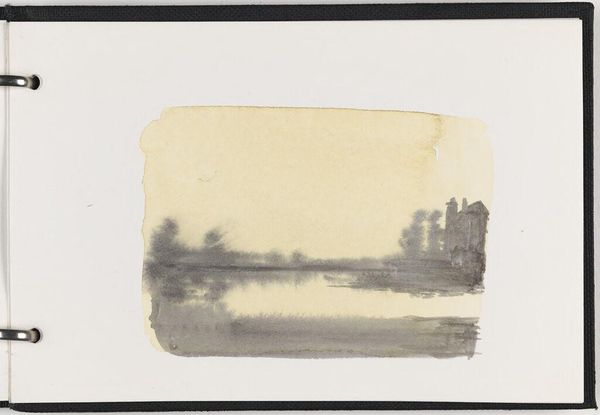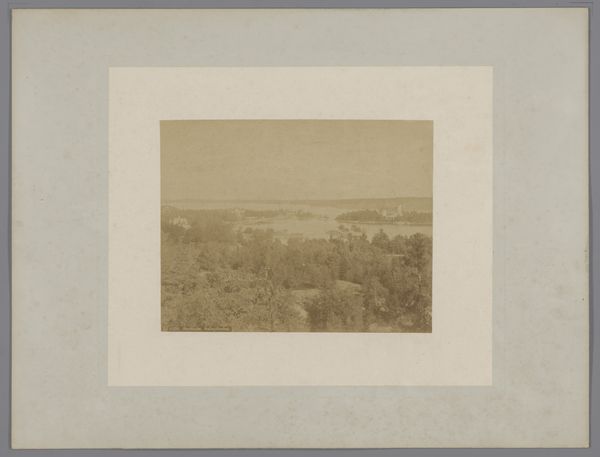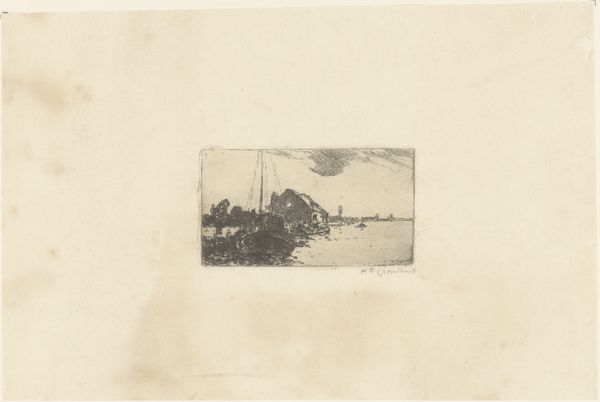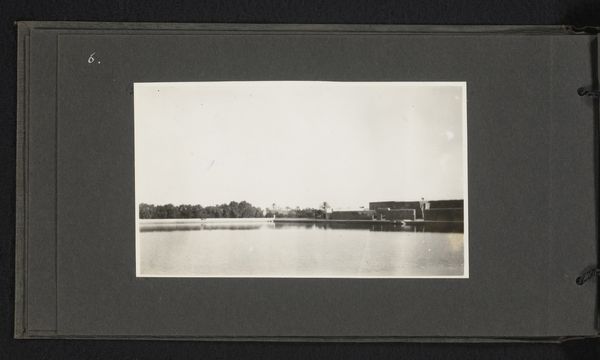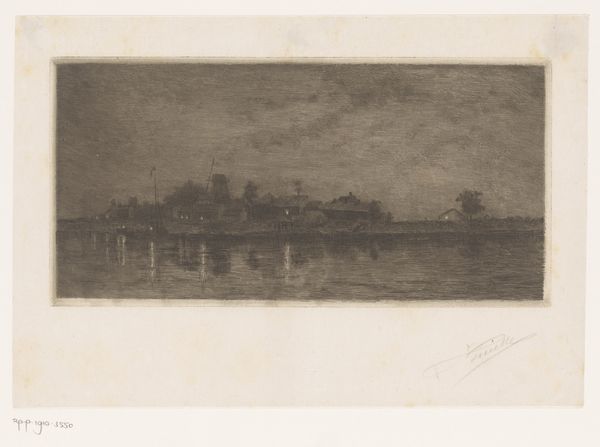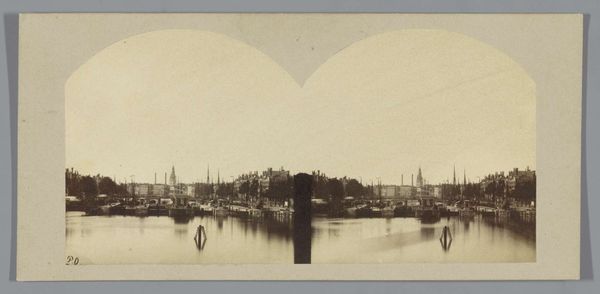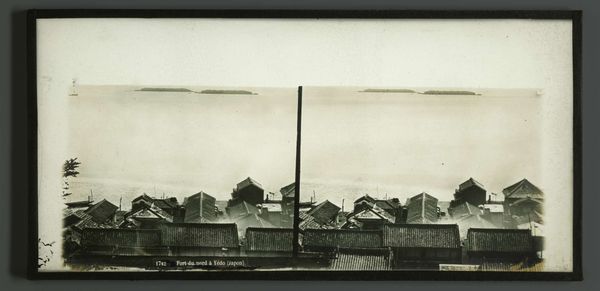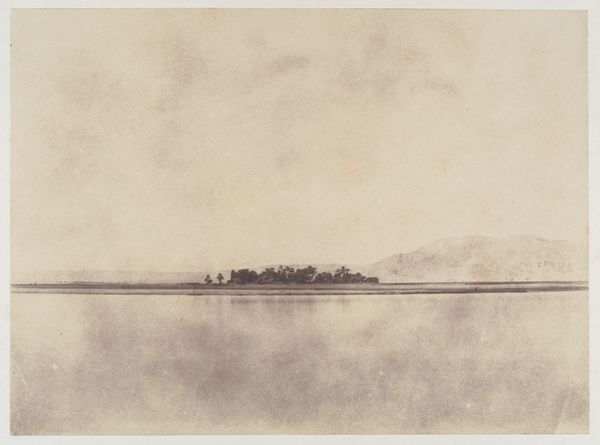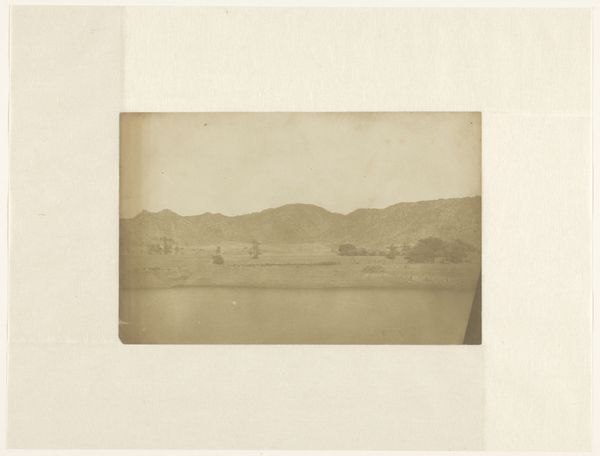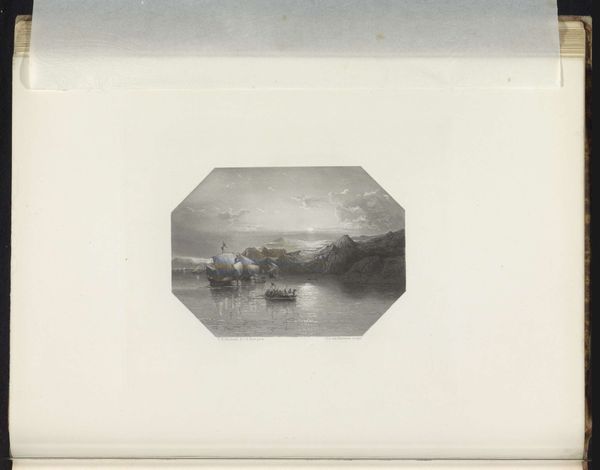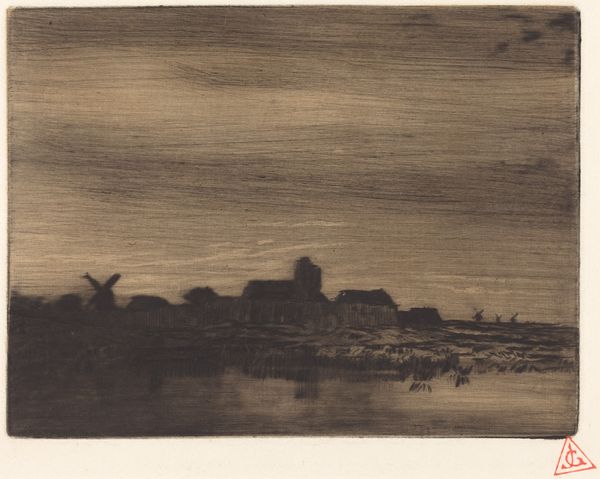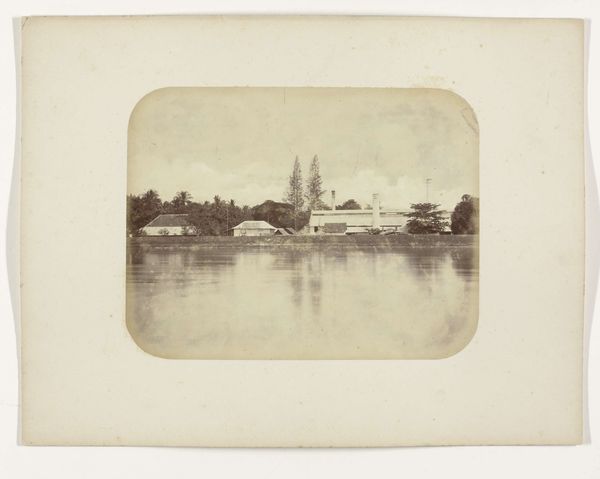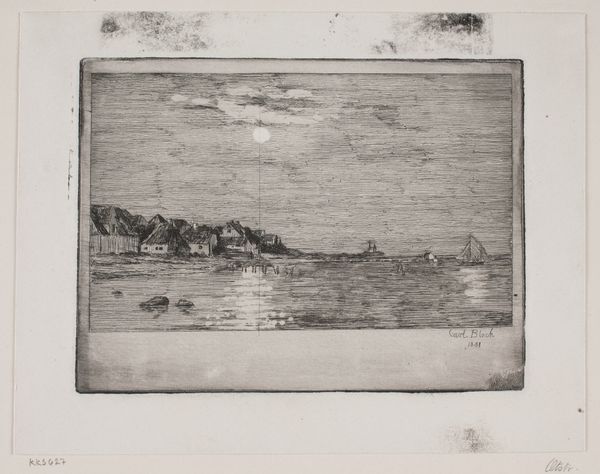
print, photography, albumen-print
# print
#
photography
#
cityscape
#
albumen-print
Dimensions: height 10.9 cm, width 34 cm
Copyright: Rijks Museum: Open Domain
Curator: This albumen print, taken before 1916, presents a panoramic view of the Paramaribo waterfront, attributed to Augusta Curiel. The composition strikes me immediately; a stillness seems to permeate this vista. Editor: A calm before the storm perhaps? Or is it meant to depict progress in the face of historical inequalities? Curator: Perhaps both can be represented in it. I read the waterfront here not merely as a physical space, but as a porous, fraught location—Paramaribo being the capital and its legacy intertwined with Dutch colonialism. I want to explore how urban spaces became stages where socio-political realities played out in the lives of ordinary citizens. How did this panoramic view affect, reflect, or perhaps distort those experiences? Editor: That's an important framing. I am drawn to the buildings themselves. In them I see a blend of styles, perhaps signifying the melding of cultures – Dutch influence evident, of course. I’m interested in what these architectural markers represent over time to diverse populations— are they symbols of resilience or enduring occupation? Curator: It's this tension between apparent harmony and embedded colonial power that really arrests me, particularly as photography at this moment provided opportunities for visibility that had not existed before for black communities. Here, who has the authority and power to produce the view itself becomes important to consider, too. Editor: Augusta Curiel's perspective also gives rise to a particular symbol. Notice how the water dominates a significant portion of the frame, behaving as a quiet witness. Is it reflecting only what is in front of it, or something else from the past? Curator: Augusta Curiel's work offers an opportunity for thinking through photography as a powerful archive in itself and offers ways to confront complex histories embedded in places. It compels us to reckon with our interpretations. Editor: For me, reflecting on this image, I'm now seeing the interplay between stability and transformation within an urban identity—and it reminds me how deeply imagery contributes to shaping cultural narratives.
Comments
No comments
Be the first to comment and join the conversation on the ultimate creative platform.
